Are you wondering when and how to prune your bushes without risking damage? Many beginner gardeners hesitate before making the first cut with pruning shears, fearing they might weaken their plants or compromise the next flowering. The key is to know the right time and the right techniques. Let’s explore the basics of bush maintenance pruning together: why to prune, when to intervene according to the seasons, which tools to use, how to cut the branches of a bush, and most importantly, the 5 simple steps for successful pruning.
Why pruning bushes?
Pruning bushes is not just about giving them a nice shape. Proper pruning allows you to:
- Stimulate the growth of new shoots and flowering.
- Prevent them from becoming too invasive.
- Remove dead or diseased branches to limit diseases and pests.
- Improve air circulation and access to light, which promotes generous flowering.
- Renew aging bushes by stimulating regrowth.
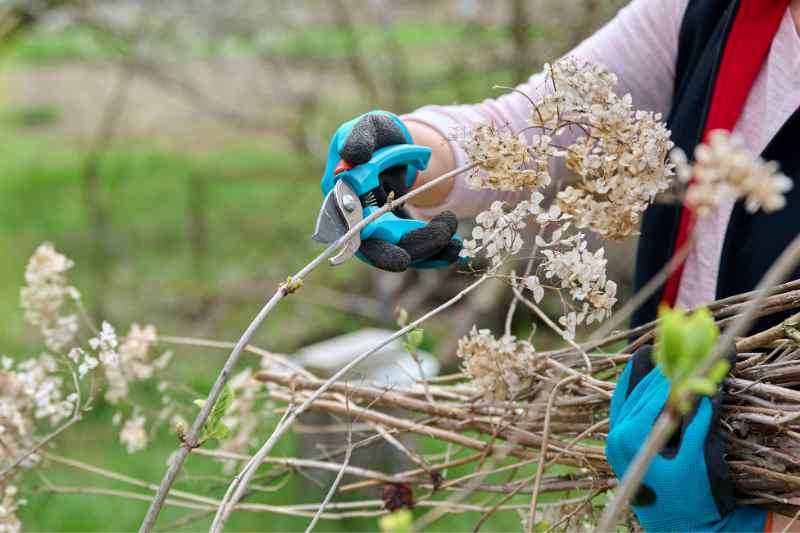
Understanding the different types of bushes for better pruning
Deciduous or evergreen: what’s the difference?
Deciduous bushes lose their leaves in autumn and remain bare during winter, such as lilac, hydrangea, or forsythia. They should be pruned at the end of winter or early spring, before the vegetation starts.
Evergreen bushes retain their foliage all year round, such as laurel, boxwood, or camellia. They require lighter pruning in spring or summer to maintain their shape without significantly slowing their growth.
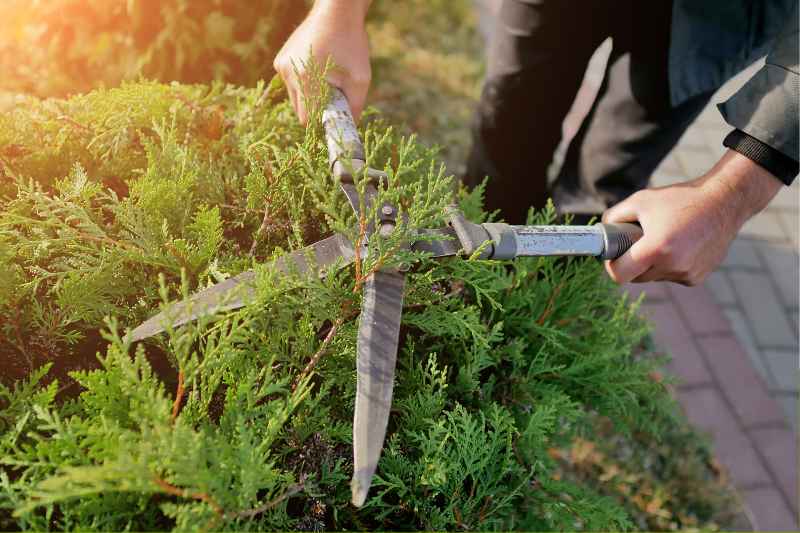
When should you prune bushes?
The key is to know the right timing and the right techniques. Pruning too early or too late can prevent the bush from flowering, while a poorly placed cut may destabilise the plant. Each bush has its own needs: some should be pruned after flowering, while others before the vegetation resumes in spring:
| Type of bushes | Examples | Pruning period |
|---|---|---|
| Spring-flowering bushes | Lilac, Forsythia, Magnolia | Just after flowering |
| Summer and autumn-flowering bushes | Hibiscus, Buddleia | End of winter or early spring |
| Evergreen bushes | Oleander, Cherry laurel, Photinia, Eleagnus, Camellia | Light pruning at the end of winter or after flowering |
| Deciduous bushes | Various deciduous bushes | End of winter or early spring |
| Winter-flowering bushes | Mahonia, Winter jasmine | After flowering |
| Aging or bare bushes | Butterfly bush, Cornus, Forsythia, Weigelias, Hydrangeas, Cotoneasters, Rugosa roses | Severe pruning at the end of winter (cutting back possible to 30 cm) |
| Evergreen hedges | Laurel, Photinia, Eleagnus | Two prunings: spring (March-April) and late summer (August-September) |
| Deciduous hedges | Hornbeam, Beech | Winter (frost-free, November to February) and summer (June-July) |
- Good to know: some aging or bare bushes (butterfly bush, cornus, forsythia, weigelias, hydrangeas, cotoneasters, rugosa roses) may require more severe pruning to rejuvenate. This should be done at the end of winter to prepare for vigorous regrowth in spring. They can be pruned almost to the ground, this is called cutting back. This involves cutting some branches very short (to about 30 cm from the ground) to stimulate the appearance of new shoots.
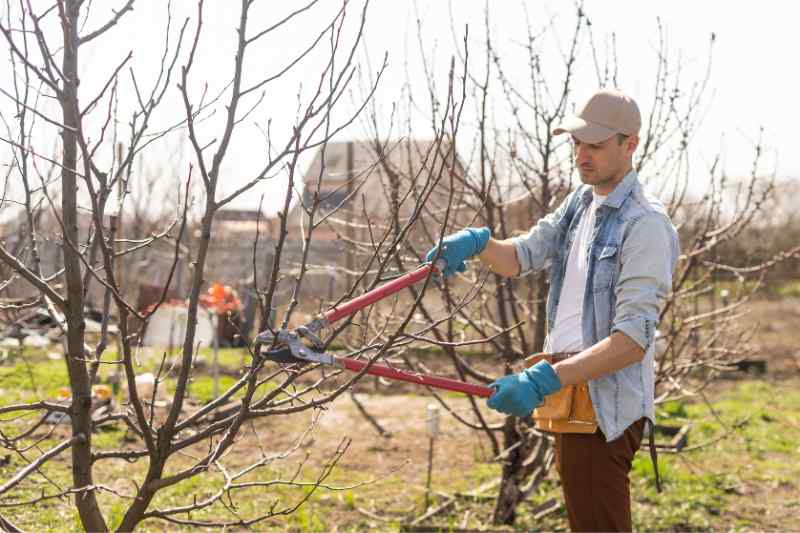
When to prune hedges?
This question often arises. When should you prune hedge shrubs ? Pruning a hedge helps maintain a structured garden and ensures dense and harmonious growth. The answer depends on their type.
Evergreen hedge: two prunings per year
Evergreen hedges (laurel, thuja, cypress) retain their foliage all year round and require regular pruning to maintain their density.
- Spring (March-April): remove unruly shoots and stimulate growth.
- Late summer (August-September): maintain the shape of the hedge before winter.
A moderate pruning is recommended to avoid weakening the bushes or making them more vulnerable to diseases.
- At the beginning of spring and late August – September.
Deciduous hedges: structure and control growth
Deciduous hedges (hornbeam, beech) lose their leaves in autumn and require pruning adapted to their growth cycle.
- Winter (frost-free, November to February): more pronounced pruning to structure the hedge before spring.
- Summer (June-July): light trimming to limit expansion and balance the silhouette.
Regular pruning, rather than severe cutting, helps maintain a dense and healthy hedge. Good to know: between mid-March and the end of July, avoid pruning to not disturb bird nesting; read more on the subject Do not prune hedges between 15 March and the end of July!
⇒ Find all our tips on hedge pruning, when and how?
What tools are essential for pruning my bushes?
The necessary equipment:
- Pruning shears that are clean and well-sharpened: perfect for small branches
- Pruning saw (there are ones that can be adapted to a pole) : essential for thick branches
- Loppers : ideal for reaching higher branches
- Gardening gloves
- Healing paste if necessary
My advice : A clean and well-sharpened tool is essential for making clean cuts and preventing the transmission of diseases between plants. Wipe your pruning shears, saw, or loppers with a cloth soaked in 70° alcohol before starting. Well-sharpened tools ensure clean cuts that heal more quickly.
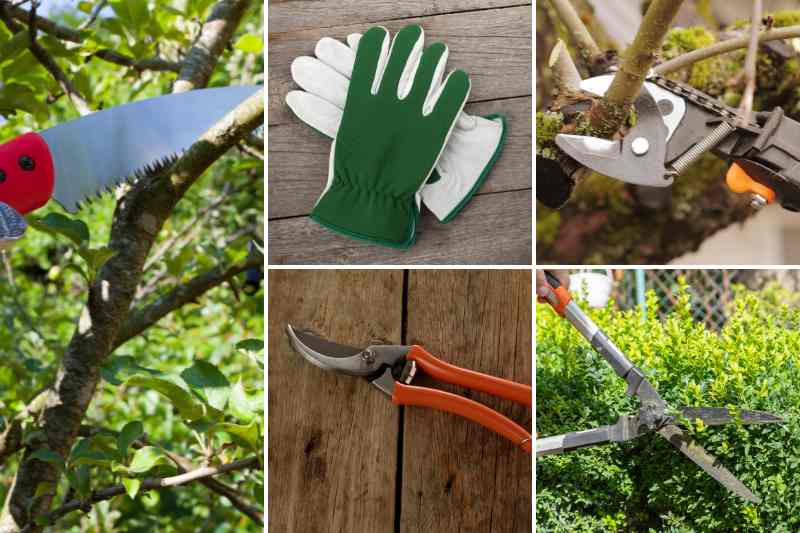
How to properly prune your bushes in 5 easy steps?
These essential pruning techniques are suitable for most bushes, but some require more specific pruning. For example, hydrangeas need light pruning to avoid compromising their flowering, while roses should be pruned more severely to stimulate flower production.
1. Observe before acting
Take the time to analyse the structure of the bush. Identify dead, diseased, or unbalanced branches. Visualise the ideal shape before you start pruning.
2. Remove dead and damaged wood
Remove dry, broken, or diseased branches. Use pruning shears for small branches and loppers for thicker ones.
3. Aerate the centre of the bush
Cut branches that grow inward to allow light and air to pass through. Also remove those that cross to prevent rubbing and disease.
4. Shorten and structure the branches
Lightly trim overly long shoots to balance the silhouette of the bush. Make angled cuts (at about 45°), just above a bud facing outward (this is the small swelling on the stem from which new leaves or branches can grow). By cutting about 5 mm above a bud, you encourage the plant to grow from there and branch out. Make a slanted cut, tilting the pruning shears so that the highest part of the cut is on the side of the bud, and the lowest part is on the opposite side. This way, rainwater will run off away from the bud, preventing it from rotting.
5. Clean up after pruning
Collect the cut branches to prevent them from attracting pests. You can recycle them into mulch by shredding or composting if possible.
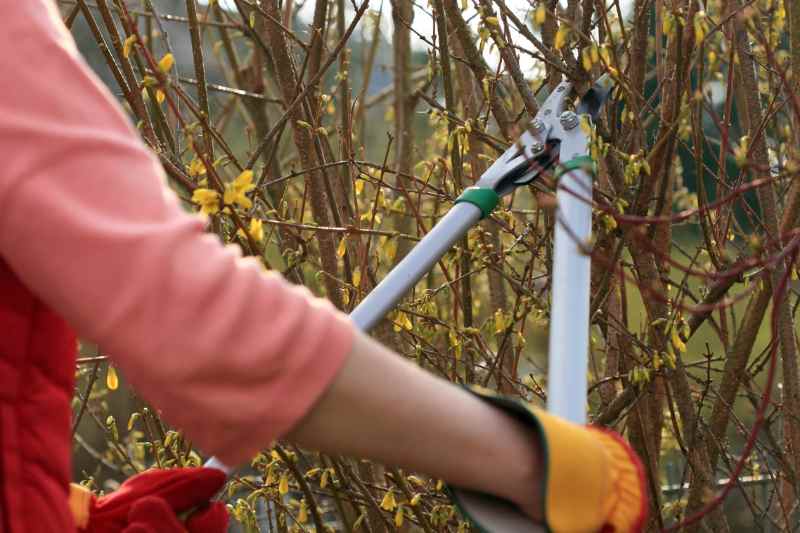































Feedbacks